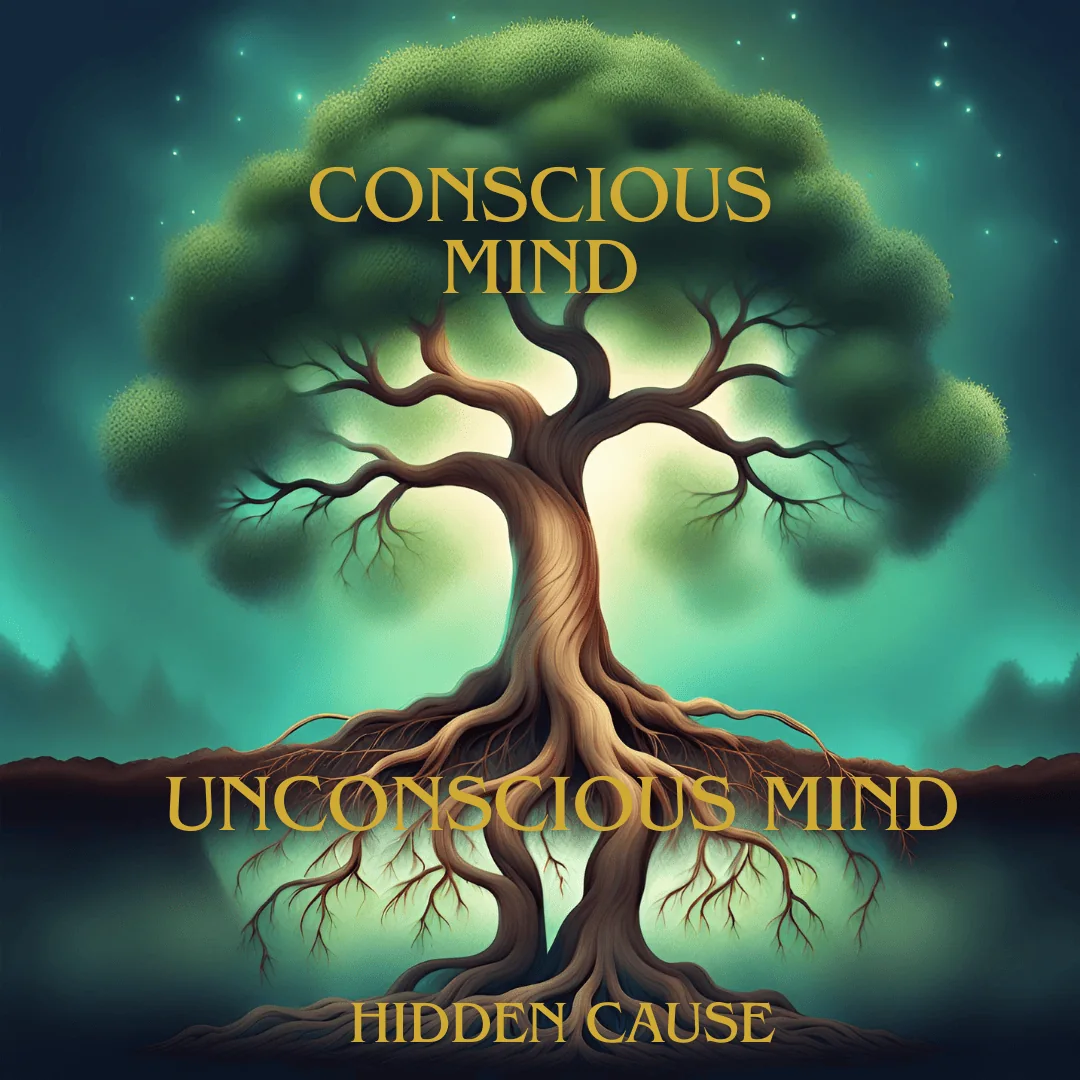How to Reduce Emotional Flashbacks in CPTSD
What is an Emotional Flashback?
An emotional flashback is a symptom of a condition called Complex Post Traumatic Stress Disorder or CPTSD. The person experiencing a flashback feels strong negative emotions linked to the originating trauma, but without the visual flashback element most commonly associated with PTSD. It is common to not realise that you are experiencing emotional flashbacks until you become aware of the problem, most people believe that the condition is chronic stress and anxiety.
Step 1: Learn to recognise the signs when you’re having an emotional flashback

The first step to learning how to reduce your emotional flashbacks is to first recognise when you are in one. And this is actually the hardest step to master.
During an emotional flashback, you will be flooded with very strong feelings that are rooted in your emotional experience when you acquired the CPTSD. That could be when you were a child, or during an abusive marriage. It would likely be an extended period of time when you didn’t feel safe and you couldn’t escape the situation.
Whilst experiencing an emotional flashback, it's very hard to recognise that you are overwhelmed by emotions because you are literally drowning in them. These emotions will fall into one of four categories, depending on the cause of your trauma: Fight, Flight, Fawn or Freeze.
So the first step to spot that you're in an emotional flashback is to recognise the physical and emotional feelings that come along with the emotional flashback. For many it could be physical pain, breathlessness, sweaty hands or a fast heartbeat. Alongside that will be a powerful emotion such as anger, the need to run or hide, an overwhelming need to fix things or extreme powerlessness.
Step 2: Tell Yourself that you’re ok and you’re in an emotional flashback
Once you’ve recognised the flashback, stop and tell yourself “I'm in an emotional flashback, I feel scared right now. And something's happened. There's been an external trigger. And I don't feel safe at the moment.” Then if you need to, go find somewhere safe to decompress.
Continue the conversation with yourself: “But if I look around me, I look around the room, I'm in a safe place. I am safe. I'm not where I was when I was a child, I'm not in my marriage. Now, I am in a safe place.” You can adapt these words to something that feels right to you.
You’re having a conversation with your unconscious mind, and you’re telling it that you’re safe and secure, this will immediately begin to reduce the severity of your emotional flashback. If you need to you can be really clear that you want your unconscious mind to step down from DEFCON1, you could say:
“Thank you for trying to keep me safe. But I don't need you right now.”
Step 3: Awaken Your Five Senses To Bring Your Body & Mind Back Into Balance

And then use your five senses. This is step three, where you reconnect your body with your mind. During an emotional flashback you will be existing predominantly in your mind, almost stuck there with anxiety.
The key to bringing your body back into balance is to experience how your body experiences the space around you.
Take a few minutes to experience your five senses. For each sense, touch a finger - starting with your thumb and working over to your little finger.
What can you see?
Look around the room. Look at the furniture, the flooring, your personal effects and any artwork hanging on the wall. Then look past that and experience the space of the room. Sit there for a moment and just exist within that space.
What can you smell?
Are there any smells in the room? Are they good or bad smells? How do you feel about them?
What can you hear?
Can you hear the traffic passing by, or rain on the windows? Perhaps a dog barking in the distance or the wind howling in the chimney.
What can you taste?
Can you still taste the cup of coffee you had this morning, or the toothpaste in your mouth. Is your mouth wet or dry? How do you feel about that?
What can you touch?
Rub your palms on your clothing, the sofa or a cushion. How does it feel? Is it smooth or rough?
Step 4: Breathe Yourself into Recovery
Once you’ve reactivated your five senses, move into breathing, either deep and slow breathing or Box Breathing:
Breathe in: for the count of 1… 2… 3… 4…
Hold your breath: for the count of 1… 2… 3… 4…
Breathe out: for the count of 1… 2… 3… 4…
Hold your breath: for the count of 1… 2… 3… 4…
Imagine outlining a box as you do it. So the first 1234 in is from the bottom left to the top left, and then across the top to the right (1234) and then to the bottom left (1234) and then back to the beginning again and keep repeating that cycle until you feel calmer.

Step 5: Reducing a Feeling of Powerlessness
If your emotional flashbacks are rooted in childhood, then you're almost certainly feeling powerlessness which is an echo from the past. The way to reduce this feeling is to speak to your inner child as if you are two separate people.
Imagine that you are standing in a room with yourself. You are an adult and you are looking at yourself as a child. Speak, outloud if you are able, reassuringly to yourself and imagine how you as a child would feel to have that kind of support and love. For example you could say:
“I really love you. You’re safe now, and I will do everything I can to protect you from the things that are happening around you. You don’t have to be afraid anymore because I am here for you. I’m going to be the one who looks after you and cares about you”

And then go back to the box breathing or breathing deeply and slowly, immerse yourself in how it would feel to be that child and hear kind words like that.
Step 6: Increasing your feeling of control
If the trigger was as a result of somebody doing something that you didn't like then your flashbacks are caused by a lack of control in your life. Imagine yourself back in that room talking to yourself as a child or a younger version of yourself. Trust yourself to know which to pick. Tell yourself:
“It's okay to have boundaries, it's okay to say no to people. It is not okay for somebody to tell you how to live your life or tell you what to do - if you don't want to do it. It’s perfectly fine for you to have your own agency and for you to control your own life.”
Maybe you have very controlling people around you. Maybe you have someone in your life who's “it's their way, or the highway”. In that case, you could say to yourself:
“It's okay to have boundaries, it's okay to say no. You don't have to over give from yourself in order to feel good about yourself. You are going to look after yourself in the future by saying no when you need to, and saying yes when you want to… and I’m going to help you to do that.”
Step 7: Silencing your Inner Critic

If you have a raging inner critic, which is the voice inside your head that says you're not good enough, or that nobody loves you, try this new exercise to turn down the volume:
The next time you find your mind racing off into that self-destructive, self-critical talk, imagine that you're on a dating app, and you're swiping left and right on things that you do want and things that you don't want.
Mentally hold up the phone in front of you and take that self destructive, self deprecating talk and swipe it away. You don't want it, you don't need it. And every time that irritating inner critic starts talking, mentally pick up the phone and swipe it away. It takes seconds. If no one is looking, hold up an imaginary phone and do it physically too.
The more often you do this, the closer you’ll get to the day when it will actually stop coming. Because your subconscious mind will start to realise that that inner critic is no longer needed.
Just remember that all your subconscious mind is trying to do is keep you safe. But it's doing a terrible job. It doesn't care whether you're happy or not. It's just trying to keep you safe.
So just pick up the phone, look at the app and swipe it away, every time it happens. Add box breathing if you feel you need to.
Step 8: Learn Your Triggers To Prevent Flashbacks before they start.
Once you’ve learnt how to control your emotional flashbacks, it’s time to learn how to prevent them from starting in the first place. At the very least you can reduce the number of times you’re blindsided by a trigger and improve how quickly you recognise the flashback (Step 1) and start to self-soothe (Step 2).
The key to learning how to prevent flashbacks is to understand WHO you are interacting with and WHAT triggers you.
Make a list of people WHO upset your emotional balance. Decide whether these people are good for you, and whether it’s possible to cut them from your life completely.

If you can’t eliminate all interactions with them, find a way to reduce those interactions to a minimum. For example, if you are coparenting with someone who triggers you, can you restrict your communication to whatsapp, or reduce the time interacting at drop off?
Within that list, add WHAT they do that triggers you and remind yourself why that’s not acceptable. These are the reasons you should reduce your interactions with them.
Each time you prepare to speak to, or interact with a person on that list, be mindful that they might trigger you and make plans to reduce that interaction to as few words as possible.
Before you go into that situation with with that person, stop and say to yourself:
“I am safe. I don't need to react immediately to whatever this person does or says. Just get through it quickly and then regroup afterwards”
If you truly have no choice but to interact with this person, the best thing you can do is to not react in the moment, and then go to your safe space, wherever that is. And then think about what it is that that person is trying to do, and how they're trying to trigger you.
In fact they might not be trying to trigger you at all, they might simply be running on their own agenda, and they haven't thought about your feelings at all. Take yourself away from that situation and go somewhere else and stop and think about how you are going to respond. If at all. Sometimes the best thing to do is to not respond at all.
Once you know the WHO you can mentally prepare yourself ahead of that interaction.
And once you've identified the HOW - you could also be on guard for an emotional flashback.
If you know beforehand, you will be ready for that interaction and you are much less likely to fall into an emotional flashback afterwards. Immediately after you come out of that situation, you sit down and think about whether you're going to respond to this at all.
Step 9 - Be Patient With Yourself & Journal
It’s really important to be patient with yourself in this recovery, because following these steps once or twice, or even three times, is not going to break the cycle of emotional flashbacks. You need to do this every single day for at least a few months.
A great way to see your progress is to journal every day.
Include what happened to you today that you're happy with and what you are grateful for. What didn't go your way today and how do you feel about it? Especially focus on your interactions with the people on your WHO list - what went well and how you can do better to reduce your interactions and reactions to their words and actions.
Go back to the beginning and read from the beginning once a week and see your progress - when you hear it from yourself you’ll certainly believe it.
Rinse & Repeat
Finally, after you've been doing this for a while, your emotional flashbacks will get so far apart that you will forget about them. And then one day one will come back. But don’t worry - it’s just your unconscious mind checking in to see if it’s really safe to stop.
So keep doing Steps 1-7 each time and slowly slowly the gaps between your emotional flashbacks will widen to the point that they will go away completely.
Step 10 - Addressing a Hidden Cause of your Flashbacks

For some people, learning to recognise your flashbacks and control them is enough to reduce their frequency to the point where they no longer affect their lives. For others, it’s necessary to get professional help to uncover a hidden cause.
Conversational Hypnotherapy is ideal because it allows the unconscious mind to step forward and express exactly what’s causing the emotional flashbacks and how to resolve them.
Steps 1-9 are still necessary because you need to undo years of conditioning (i.e. trigger = fight, flight, fawn or freeze), however Hypnotherapy can accelerate the process along the way.
Your Happy Ending Is In Your Hands
The key to reducing your emotional flashbacks and living a more fulfilling and happy life is literally in your hands. You can seize back control of your life and work towards a happier future.
This is a hard truth: no one else is going to do this for you and you're wasting time if you're waiting for the person who caused this trauma to take it away. It's your life, so live it.
As you journal every day, and prepare yourself before you interact with people who cause emotional flashbacks, know that each time you perform these steps you’re one day closer to the moment you realise that you haven’t had an emotional flashback in months.
When you pick up that imaginary phone and swipe away the inner critic along with the negative thoughts, your subconscious mind will learn that there is no need to create emotional flashbacks as a way to keep you safe because you are safe without them. The more you do it, the less emotional flashbacks will come along to ruin your day.
Key Takeaways
Learning to recognise an emotional flashback is the first step to recovery
Reconnect with your body using your five senses and breath work
Talk to your inner child
Silence your inner critic with one swipe
Prevent flashbacks by knowing WHO and WHAT causes them
Patience, journalling & repetition are key
Get help if you need it - book a free consultation call
You are responsible for your recovery
Further Reading about Emotional Flashbacks
Rothschild, B. (2000). The Body Remembers: The Psychophysiology of Trauma and Trauma Treatment. This study explores the connection between trauma and physical responses.
Walker, P (2013) Complex PTSD: From Surviving to Thriving. Examines the causes of Complex CPTSD, the nature of flashbacks and the road to recovery
Schwartz, A (2021) The Complex PTSD Treatment Manual: An Integrative, Mind-Body Approach to Trauma Recovery
By weaving these studies into our understanding, we can appreciate the complex interplay between our psychological landscape and the somatic responses that act as its messengers.


